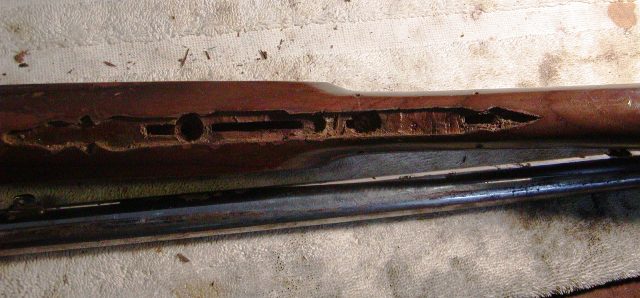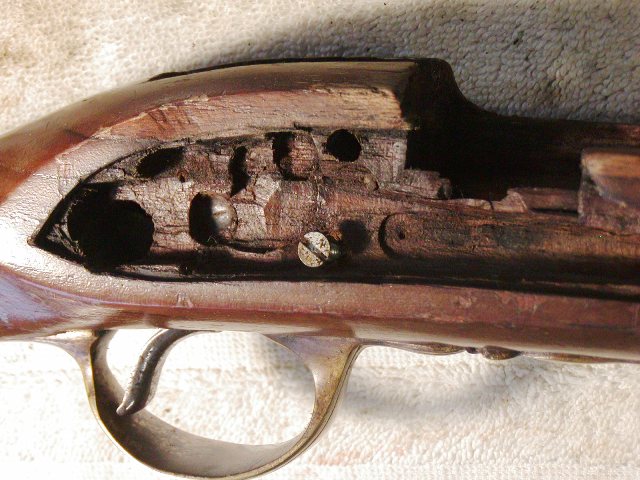Hi,
That gun is a fantasy and a poor one at that. Where is the side rail used on all dragoon firearms? Ordnance did not issue officer's firearms, they were purchased privately by the officer or occasionally batch orders where made by the regimental colonel. Keep in mind, many senior officers including Cornwallis, Clinton, and Burgoyne discouraged officers from carrying fusils. They wanted the officers leading the men not loading and firing. The gun would definitely have a bayonet stud for the same bayonet used on guns of other ranks. The stock is poorly shaped with lock panels that look like they were carved by a first time builder. Even the lock has the wrong frizzen spring. This is no copy of anything in the Smithsonian.
Tenngun, that MVT offering is no officer's fusil. They grossly misidentify the original, which was a New England militia gun from the early 19th century I believe to have been cut back. It was made with Ketland export components. Almost all true officers fusils had sling swivels and mounted a full sized bayonet. Here are some photos of that particular gun so you can judge the quality.





It looks to be inlet using a dull screw driver. The lock was particularly bad with the tumbler post not protruding through the lock plate far enough. When you tightened down the tumbler screw on the flint cock, the cock was simply tightened against the lock plate causing tremendous friction. I really hate it when these guys market their stuff as "exact" or "faithful" copies of originals. They are not even close. I am sympathetic with the need to produce guns at a reasonable price but I really get angry when a product is willfully marketed as something it is not. It is an affront to the buyer and to the talented tradesmen who made the originals long ago.
dave












